From sun-drenched beaches to exclusive resort pools, shiny and metallic swimwear captures attention like nothing else. These high-impact fabrics bring instant glamour, create viral social media moments, and position a brand as bold and fashion-forward.
But beneath the glimmer lies a critical business decision. Metallic fabrics come with a unique set of challenges, from durability concerns to specific care requirements. Is the high-fashion appeal worth the potential risks?
This complete guide will help you navigate the world of metallic swimwear, exploring the different types of fabrics, the pros and cons for your business, and how to strategically incorporate them into your collection.
Typical Composition
Not all shiny fabrics are created equal. Understanding the composition is key to choosing the right one for your designs and managing customer expectations.
Foil Laminated Fabrics (The Classic Shine)
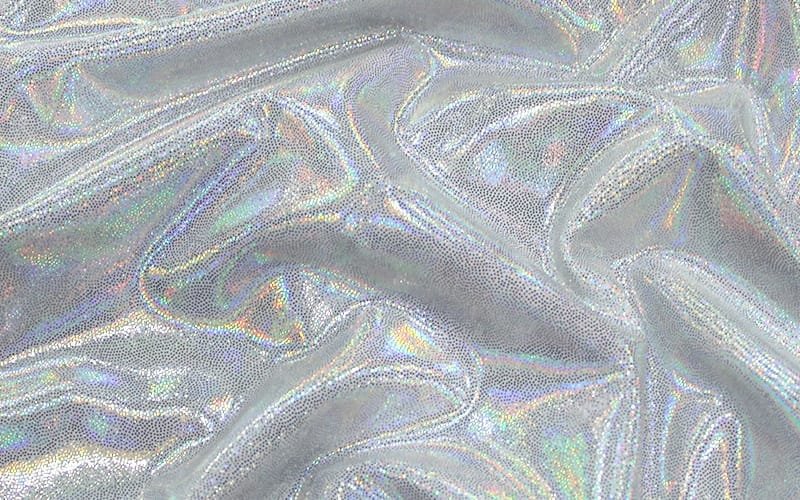
This is the most common type of metallic swimwear. The shine comes from a thin layer of metallic foil that is heat-pressed and bonded onto a base fabric.
Base Fabric: Typically a blend of Nylon or Polyester.
Stretch: 15−20% Spandex (Elastane) is blended for fit.
Surface: A laminated metallic or holographic foil layer.
Result: A brilliant, liquid-metal appearance. This is also the most delicate option.
Metallic Knit Fabrics (Lurex)
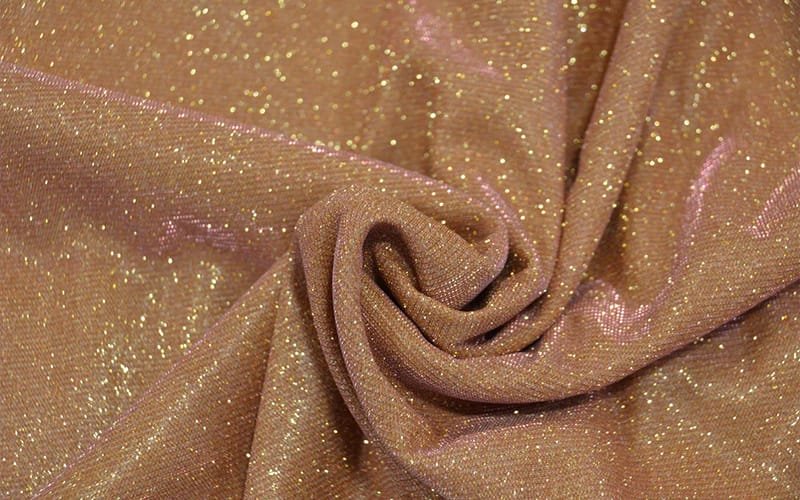
A more durable and sophisticated alternative, Lurex involves metallic threads that are woven or knit directly into the fabric alongside the nylon and spandex fibers.
Composition: Nylon/Spandex or Polyester/Spandex blend with integrated Lurex threads.
Result: A built-in, subtle shimmer that won’t crack or peel like foil. The shine is part of the fabric itself, making it more resistant to chlorine and saltwater.
Pros of Shiny Swimwear Fabrics
- High Perceived Value: The glamorous look allows for premium pricing, positioning your pieces as luxury or exclusive items.
- Powerful Marketing Asset: Metallics are inherently photogenic. They create scroll-stopping content for social media, ad campaigns, and influencer collaborations.
- Brand Differentiation: In a saturated market, a unique holographic or liquid-gold bikini can set your brand apart from competitors using standard matte or ribbed fabrics.
- Perfect for Capsule Collections: Ideal for limited edition drops, festival edits, or resort-specific lines that create urgency and hype.
Cons of Shiny Swimwear Fabrics
- Durability Concerns: This is the biggest drawback. The foil layer on laminated fabrics can crack, peel, or dull after exposure to chlorine, saltwater, sunscreen, and even friction from sitting on rough surfaces.
- Lower Performance: These fabrics are not designed for athletic or frequent swimming. They are “fashion” fabrics first and “swim” fabrics second.
- Complex Care: They require strict hand-washing and air-drying, which must be clearly communicated to customers to avoid complaints and returns.
- Potential for a Shorter Lifespan: Savvy customers may view these as “single-season” statement pieces rather than long-term staples, which could affect brand perception if not managed correctly.
Metallic vs. Standard Fabric
| Attribute | Shiny & Metallic Fabrics | Standard Nylon/Polyester Fabrics |
|---|---|---|
| Target Market | Fashion-forward, trend-driven, luxury, resort. | Everyday wear, athletic, performance, family. |
| Durability | Low to Moderate. Prone to peeling (foil) or snagging (Lurex). | High. Excellent resistance to chlorine, UV, and wear. |
| Lifespan | Shorter; best for occasional “statement” wear. | Longer; designed for frequent and repeated use. |
| Care Level | High. Hand-wash only, no heat, handle with care. | Low. Machine washable (gentle cycle), more forgiving. |
| Feel & Comfort | Can be stiffer or less breathable. | Soft, smooth, and highly comfortable. |
Best Styles for Metallic Swimwear
When working with metallic swimwear, the goal is to let the material be the star. These fabrics are best suited for fashion-forward silhouettes that emphasize glamour rather than complex, athletic designs.
The best styles often feature clean lines and dramatic shapes that provide a perfect canvas for the fabric to shine.
1.Minimalist Triangle Bikini
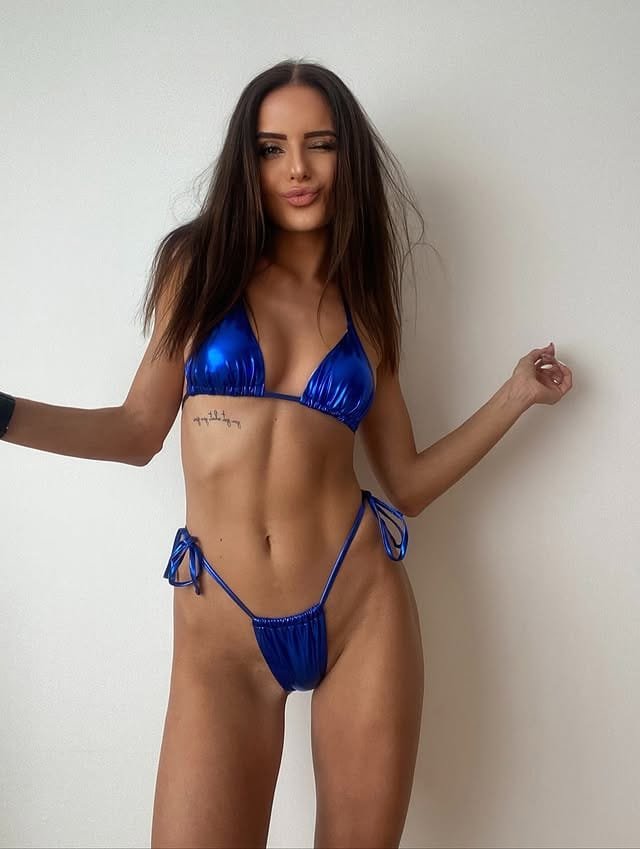
The classic triangle top and simple tie-side bottom remain one of the most effective styles for metallic fabrics.
Why it works: Its simplicity is its strength. The minimal coverage and clean lines provide an uninterrupted canvas that puts the focus entirely on the fabric’s lustrous shine, color, and texture. It’s a timeless look that feels modern and chic in a metallic finish.
2.High-Waist Retro Bottom
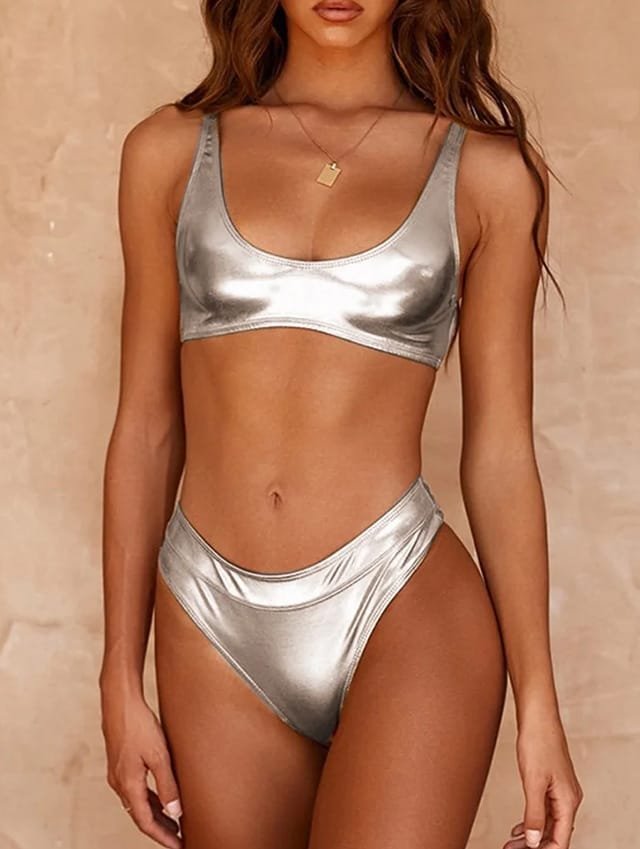
Pairing a high-waist bottom with a bandeau, bralette, or triangle top creates a striking balance of vintage and futuristic.
Why it works: The larger surface area of the high-waist cut beautifully showcases the metallic or holographic effect. It combines a flattering, figure-hugging silhouette with the bold statement of the fabric, creating a look that is both on-trend and sophisticated.
3. Cut-Out or Strappy One-Piece (Monokini)

For maximum glamour and an editorial feel, nothing beats a one-piece swimsuit with strategic cut-outs.
- Why it works: The interplay between skin and shiny fabric creates a dramatic, high-fashion contrast. The cut-outs draw the eye and accentuate the body’s curves, while the metallic finish elevates the entire garment from a simple swimsuit to a true statement piece.
4. Asymmetrical One-Shoulder
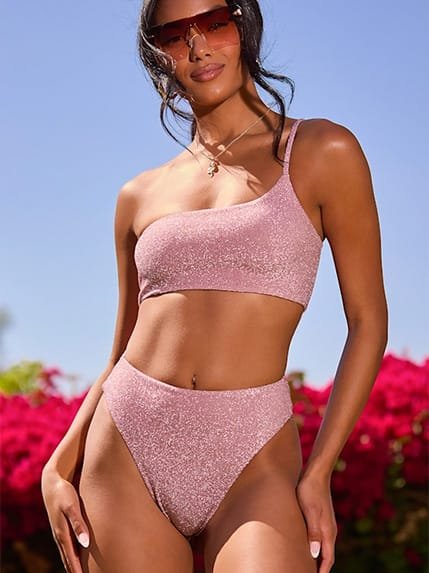
This style, whether on a bikini top or a one-piece, offers an effortlessly chic and modern aesthetic.
Why it works: The asymmetrical neckline provides an artistic, sculptural element that pairs perfectly with the luxe feel of metallic fabric. It draws attention upward to the collarbone and face and feels sophisticated and exclusive—ideal for resort and poolside settings.
5. Classic Bandeau Top
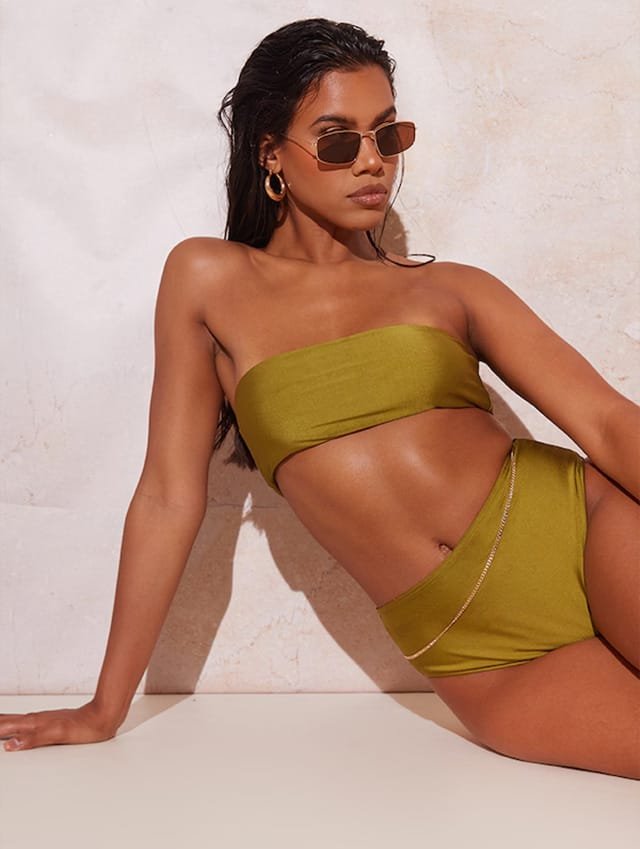
Pretty Little Thing
A simple, strapless bandeau is a perfect vehicle for a show-stopping metallic fabric.
Why it works: The bandeau offers a clean, unbroken panel of shimmering fabric across the chest. This maximizes the visual impact of the material without the interruption of straps, creating a sleek, polished, and elegant look that’s perfect for sunbathing.
Key Takeaway for Brands:
With metallic fabrics, simplicity in silhouette often creates the biggest impact.
Avoid overly busy designs with excessive ruffles or complicated ruching, as these elements can compete with the fabric’s natural boldness.
Focus on clean lines and flattering cuts to create a timeless yet unforgettable piece.
Essential Care Instructions
Proper care is non-negotiable. You must educate your customers clearly to manage expectations and protect your brand’s reputation.
Gentle Hand Wash Only: Use cold water and a very mild detergent. Never machine wash.
Rinse Immediately: After any contact with chlorine or saltwater, rinse thoroughly with fresh water.
Avoid Abrasive Surfaces: Warn customers to be mindful of rough pool edges or wooden docks.
Lay Flat to Dry in Shade: Never put in a dryer or wring out the fabric. Gently squeeze out excess water and lay it on a flat surface away from direct sunlight. Heat will destroy the finish.
Conclusion
Shiny and metallic fabrics are a powerful tool for brands looking to make a high-fashion impact. They elevate a collection, create stunning marketing visuals, and allow customers to feel uniquely glamorous.
However, they are a strategic choice—best suited for special-edition capsules where style takes precedence over durability.
By understanding their limitations, sourcing the right type , and educating your customers on care, you can successfully harness the power of shine without compromising your brand’s commitment to quality.

